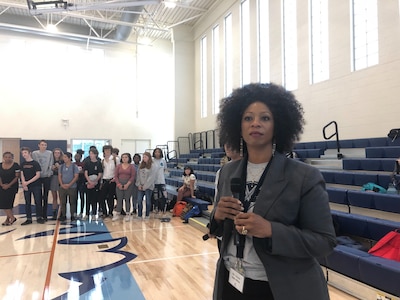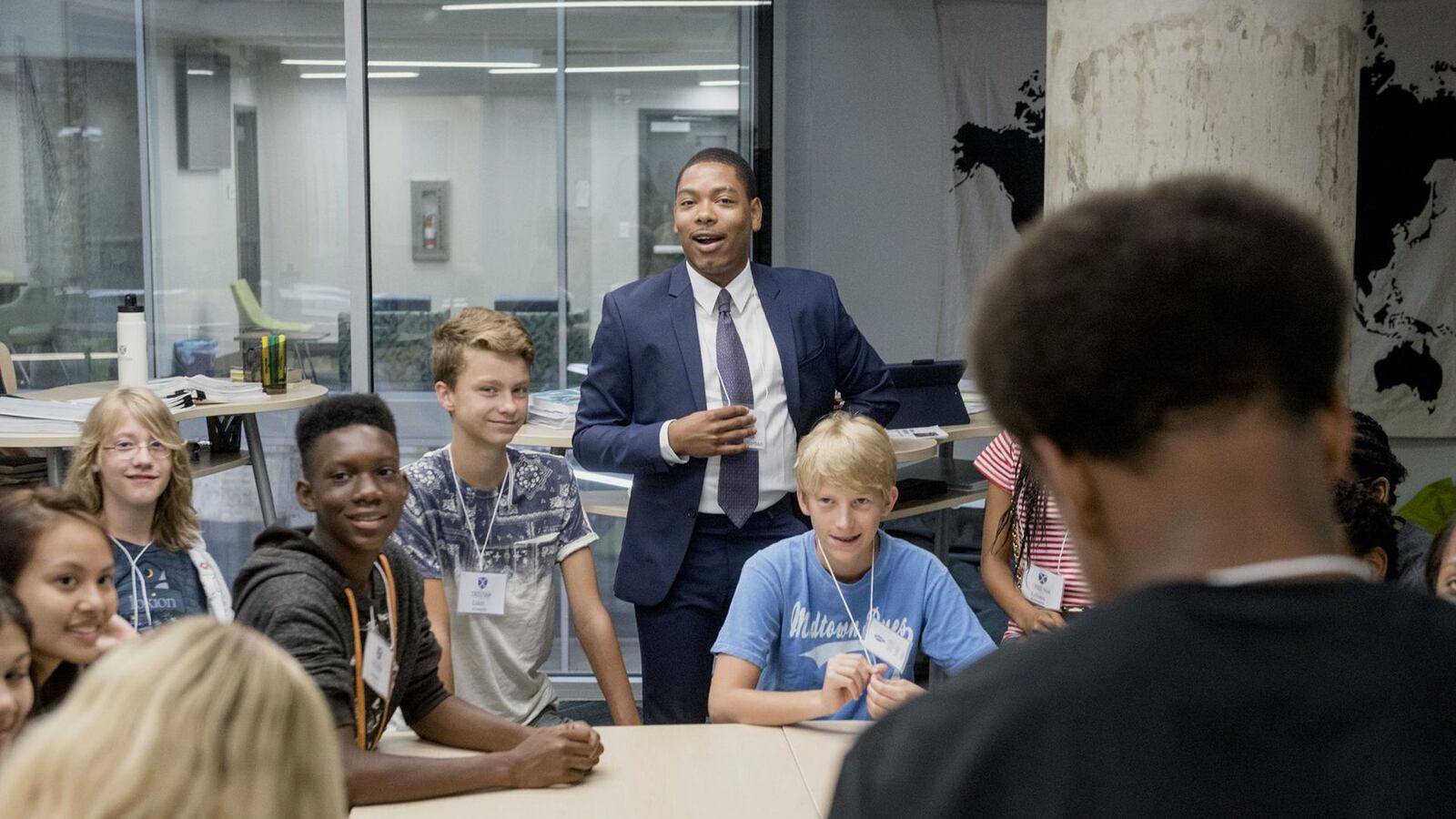A high-profile Memphis charter school told parents in a letter last week that it won’t hire a new principal to replace the one who left three months into the school year.
Chris Terrill, Crosstown High School’s executive director, told parents in a meeting last week that he would lead daily operations for the 279-student school. But he added in the letter that the school would not seek a replacement for Alexis Gwin-Miller who “will no longer be involved” with the school, its second leader in two years.
“We are not searching for a new principal, but rather implementing a new leadership structure that better reflects the collaborative and non-traditional approach of the school, and will provide more varied points of view to ensure that the voices of students, their families, and faculty members are heard and incorporated into what is happening now and in the future,” he said in the letter sent to Crosstown parents.
He later elaborated that he will also be in charge of the school’s fundraising and community outreach. Ginger Spickler – previously the school’s director of strategic partnerships and projects – will move into a chief of staff role and four educators have taken on additional responsibilities and titles:
- David Anderson will be the dean of students. Anderson, formerly director of culture and innovation, will be in charge of discipline and is tasked with establishing “culture from a restorative lens as opposed to a punitive lens.”
- Deion Jordan will be the director of competencies and continue to teach philosophy and speech/debate. Jordan will work with teachers to accurately measure student progress toward mastery of goals set by Crosstown.
- Samantha Stiles will be the director of pedagogy and continue to teach ninth-grade humanities. She will work with teachers on their instruction in the classroom.
- Ryan Dixon will be director of project-based learning and continue to teach ninth-grade humanities. Dixon will work with teachers and students to develop “strong, interdisciplinary projects.”
Crosstown opened with great fanfare two years ago in the Crosstown Concourse, a huge redeveloped high-rise building that once was a Sears warehouse. It was part of a wave of schools seeking to “reimagine high school” thanks to $2.5 million from XQ, the nonprofit backed by Laurene Powell Jobs. XQ is one of the most ambitious and best-funded school reform initiatives.
The high school uses real-world projects to teach students and seeks to create a diverse school in a city where schools have become increasingly segregated over the last 50 years. But this year, Crosstown’s mission has been put to the test as students speak out against the school’s structure, which they say creates segregation within the school.
Beverly McRee, a Crosstown parent of a 10th-grader, said “bumps in the road” are to be expected for a new school trying to be different, and that she was excited for the new leadership structure that would elevate teachers’ responsibility.
“For my son, he doesn’t care what’s going on at the top end, it’s who he’s dealing with on day-to-day that is working for him,” McRee added. “Their model, him working with his specific group of teachers every day, that seems to be going really well for him.”
Another Crosstown parent, Jennifer Ellis, said she’s still wanting more clarity on why Gwin-Miller left and how the school is working to address complaints from students that different races are treated differently.
“It seems like a very careful play on words to say she is no longer with the school, but not say if she left on her own or if you let her go,” Ellis said. “ We as parents deserve to know why this happened the way it did, for the second year in a row.”

Gwin-Miller’s departure came 10 days after a student-led protest. Dozens of students asked questions about the school’s cohort model, which was in place before Gwin-Miller was hired. Students in the same grade are divided into separate groups who take classes together, which students say has segregated them by race. They also pushed back on a lack of student representation in decision-making.
Terrill told parents and students during a meeting last week that Crosstown was working on re-installing a student government as well as adding two non-voting student positions to the charter high school’s governing board.
He also partially explained the demographics of the cohorts, which he said were intentionally designed to be diverse but became slightly less so when students requested certain elective classes.
In ninth grade, one cohort had 33 black students and 22 white students, while the other had 47 black students and 20 white students. In 10th grade, one group had 39 black students and 20 white students, while the other had 34 black students and 23 white students.
“It skewed it a little but not a lot,” Terrill said, adding that the school was looking at different options to help students feel less siloed by cohort.

